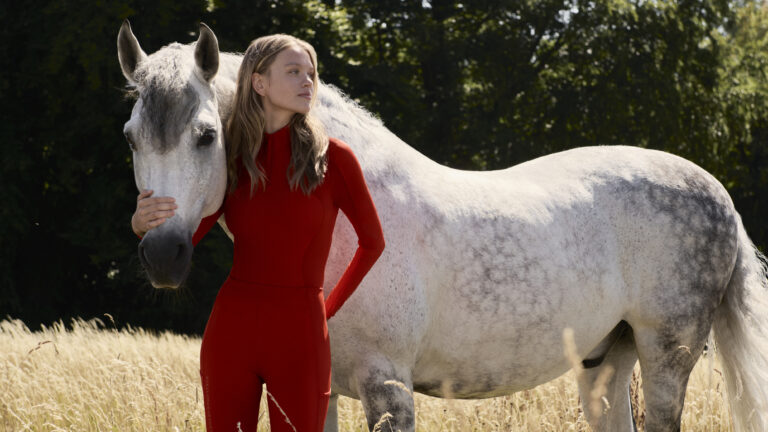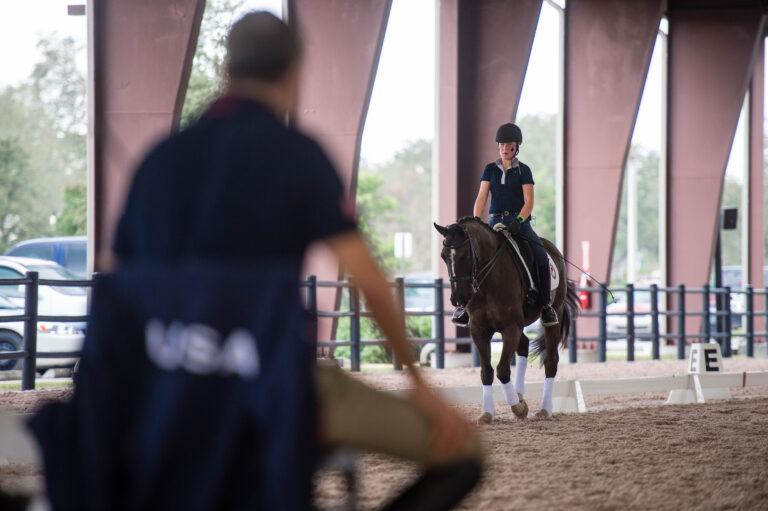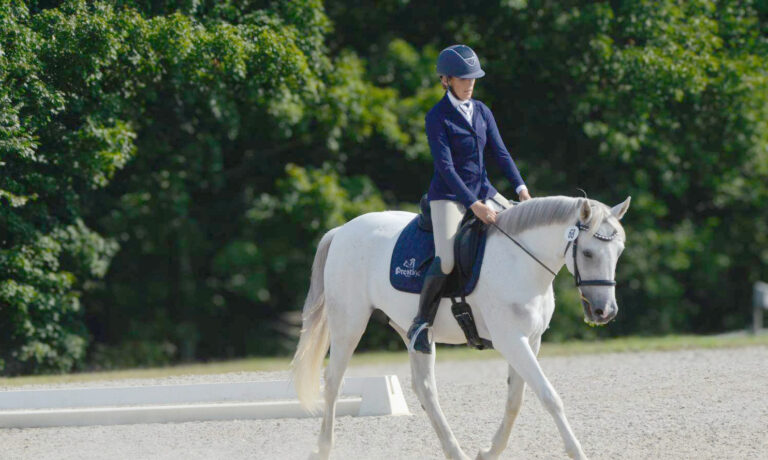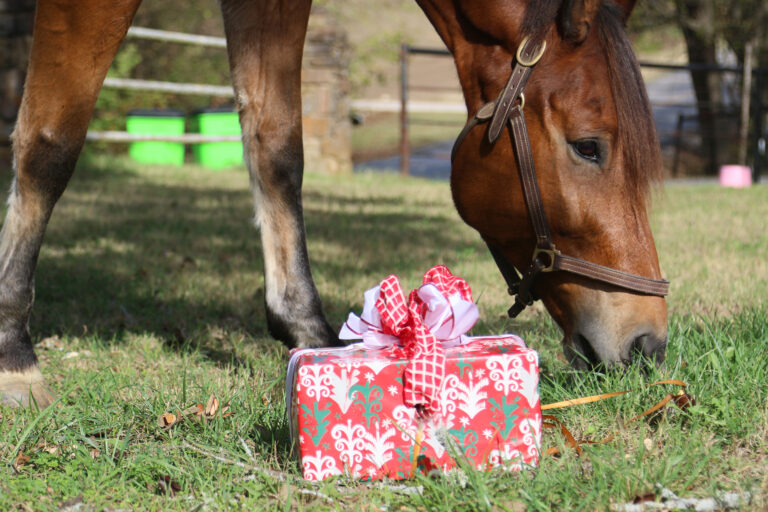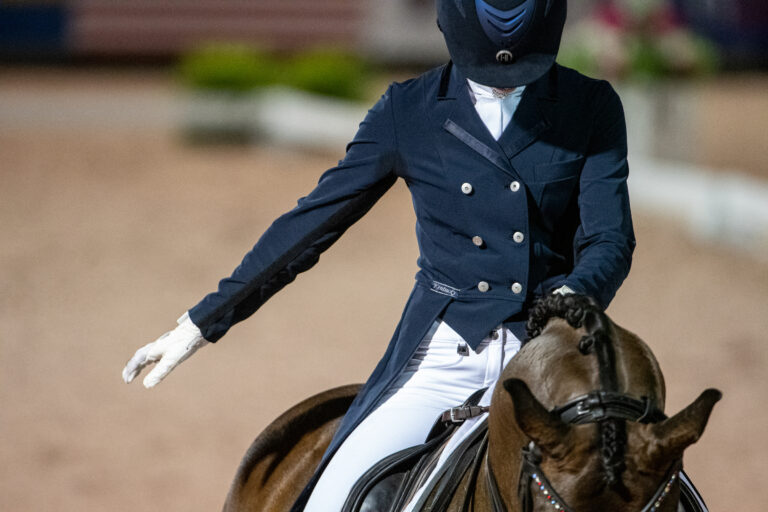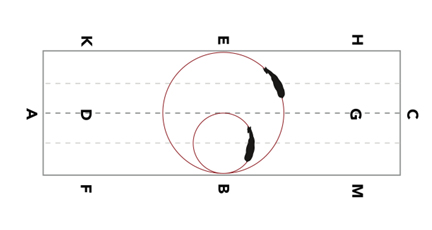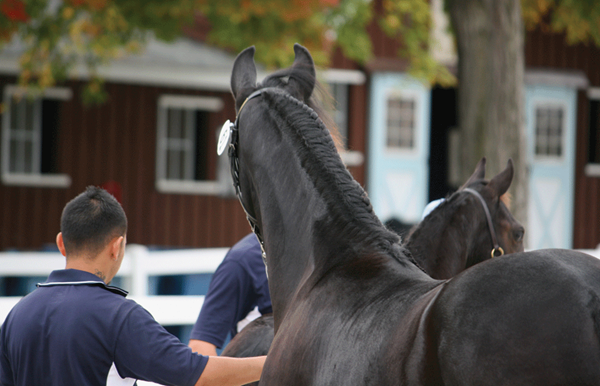
Arriving at the Devon show grounds the Saturday before Dressage at Devon (DAD) is like being in a theater a few days before opening night. There is an air of excitement tempered by the overwhelming amount of work still to be done.
As the volunteer coordinator for DAD, I have a behind-the-scenes view of this great competition. When you arrive on the show grounds, you first notice the iconic brown barns with blue trim and the big, blue grandstand surrounding the Dixon Oval, Devon’s main ring. There are decorations—hundreds of mums, hydrangeas, corn stalks and pumpkins—massed in front of the committee stand at the end of the Dixon Oval or clustered around the show-office doorway. The festival area, a grouping of dollhouse-like specialty shops and small eateries, is a favorite among visitors and competitors alike.

Beyond the heavy machinery and the vast array of boxes, the grounds crew, vendors and staff greet each other as horse-show people do, catching up on the news since last year or the last show they’ve attended.
The thing oddly absent from this scene is the horses. Once they come, the well-choreographed chaos will shift focus. But they won’t arrive for a few more days. Meanwhile, vendors set up their spaces, show officials make runs for Magic Markers and duct tape and things begin to take shape.
A Bit of History
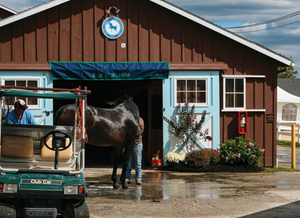
All of this activity is located in an unlikely place for a major equestrian event—the small town of Devon, just outside of Philadelphia, Pennsylvania. The grounds are compact with competition and warm-up arenas, grandstand, a shopping area and nearly 900 stalls all on just 21 acres. DAD, one of the oldest dressage shows in the country and the first to receive the prestigious USEF Heritage Competition designation, packs a lot into the historic show grounds for its six-day run every fall.
The USEF Heritage Competition designation is awarded to well-established competitions that are devoted to ideals of equestrian sportsmanship and competition. DAD was not only the first dressage show to achieve this recognition, but also remains as the only dressage competition to hold the title.
DAD didn’t begin as a week-long, world-class dressage and breed show, but as the project of a few members of the Delaware Valley Combined Training Association (DVCTA) in the late 1960s. The first show was held at Tory Hill Farm in Glen Mills, Pennsylvania, and then moved to the Radnor Hunt Club in Malvern, Pennsylvania, before finally settling in Devon in 1975. Although DAD and DVCTA now operate under separate nonprofit licenses, the two groups maintain close ties.
For 10 years, the show acted as a fundraiser for the Children’s Hospital of Philadelphia (CHOP) Cancer Research Center. Hundreds of staff and volunteers from CHOP participated and more than a half-million dollars was raised for the hospital during that time.
When CHOP withdrew as beneficiary in the early 1990s, Thorncroft Therapeutic Horseback Riding, Inc., was selected as the new recipient, and Thorncroft volunteers helped run the show. During Thorncroft’s involvement, more than $1.1 million was raised for the organization.
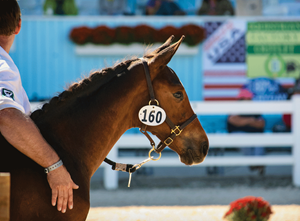
In 2012, Thorncroft left the partnership, and DAD supported individual causes in the following years. Over the last two years, DAD has funded educational programs in addition to installing new drainage and footing in the schooling area at the show grounds.
Nominations for new charitable organizations to become beneficiaries were accepted in the beginning of 2015, and this nomination process will now happen annually. With an added emphasis on equine-oriented charities such as Thorncroft, the beneficiary selection process supports DAD’s mission statement of promoting the sport of dressage and supporting the education of its participants.
For most competitors, volunteers and spectators alike, there is something magical about DAD. For competitors, qualifying for DAD is a privilege that is earned. Whether it’s the historic venue, the quality of the horses, the caliber of the competition or the boutique shopping, DAD stands out. It’s more than just a dressage show.
The Breed Show
Once Monday rolls around, the rings are prepped and the horses begin arriving for the breed show. By the evening, foals of the current year, along with mares, stallions and youngsters under saddle are getting their first look at the famed Dixon Oval in preparation for their show the next day.
By 7 a.m. Tuesday, stewards are monitoring the warm-up arenas and horses are being longed. For the in-hand classes, colts, geldings and stallions occupy one side of the warm-up, while mares and fillies are in the other. The preshow tension is evident in the skittish foals, protective mares and strutting stallions, but the weather can be great and the show gets off to an exciting and wonderful start.
The stewards are the first volunteers to be at their posts in the morning, followed by the scribes and runners. Volunteer positions, especially the coveted scribing jobs, are applied for months in advance, and many volunteers have been returning to their posts for years.
Volunteering at DAD is a special event on many people’s calendars. Lunchtime in the volunteer room is a chance for people to catch up on what’s going on in everyone’s lives. For many volunteers, DAD resembles a large family reunion.
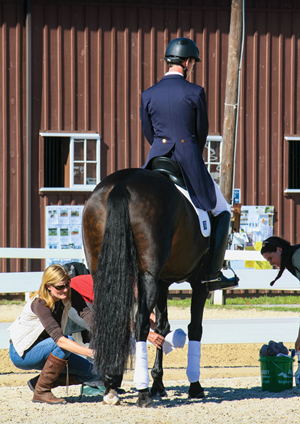
DAD’s breed show highlights the best mares, stallions and young horses on the East Coast. The handlers need to be athletes in their own right to bring out the best in their horses. By the end of Wednesday, the breed-show champions are awarded and the dressage ring is set up immediately.
In the volunteer room, preparations are made for potential rain. Boxes of ponchos and large plastic bags for clipboards and score sheets are ready. Along with the individual breed classes running most of the day in the Dixon, the performance show officially starts mid-afternoon with the FEI jog and continues into the evening.
The Performance Show
The Prix St. Georges class runs all day in the Gold Ring, while the Dixon hosts eight smaller classes. Lunch break in the Dixon features the Ladies’s Hat Contest, a perennial favorite that awards prizes for the fanciest hats. Feathers, flowers, silk and Swarovski are all in residence on hat day.
During breaks, DAD brings in a special performer for an exhibition. In 2012 and 2014, Australian horseman Guy McLean took the stage. In 2013, Tommie Turvey, a trainer who works with stunt horses for films and commercials, was the selected guest. This year, the Tempel Lipizzans will be performing.
Both rings run under the lights until around 10 p.m. Before people head out, volunteer assignments are listed on the white board, rings are dragged, coffee pots are readied, schedules are checked and the preparations are complete for the marathon that is Saturday at DAD.
Saturday is the big day. Spectators start to fill the show grounds before lunch and by dinnertime, the stands are full as people await the main event—the Grand Prix Freestyle.
One of the things that makes DAD so special is the electric atmosphere on Saturday night. The 291 boxes and 1,400 reserved seats are filled to capacity.
Families pack gourmet food and wine and host parties in their boxes. Riders, horses and fans feed off the energy, and the stands rock with music, cheering and applause. The scribes, runners and gate crew who work Saturday night arguably have the best job perk—front row for the freestyles. The hotly contested class runs until after 10:30 p.m., with the awards finishing up around 11 p.m.
On Sunday morning, a quieter feeling prevails. As with any long show, people are starting to focus on packing up and heading home.
Ready for 2015
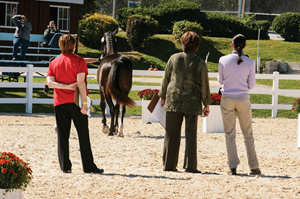
After 2014, plans were already well under way for the 40th anniversary show in 2015. Due to Pope Francis’s visit to Philadelphia falling on the original dates for DAD, the USEF and FEI approved a petition for a date change. This year’s show will be held Sept. 29–Oct. 4.
DAD 2015 will include several exciting changes, such as performances by the Tempel Lipizzans Oct. 2–4, the addition of FEI Adult Amateur classes and a Youth Dressage Sport Horse Breeder/Handler Seminar, held Sept. 28–29.In addition, the prize money for the CDI competition has been increased to $40,000 in celebration of DAD’s 40th anniversary. For more information about DAD or to sign up for its newsletter, visit dressageatdevon.org.


